Imagine this scenario: You woke up late because you repeatedly snoozed your alarm while falling back to sleep. Now it’s 7 am and you need to be at Ortigas for work by 9:30. Sounds like only a miracle can help you at this point, but you're confident that you can make it with your beloved car.
You take a bath, dress up quickly, pack your stuff, head down to your garage and hop on board. As you turn the key; the car makes several noises but doesn’t start. Your eyes bulge in anxiety, you nevertheless steel yourself with optimism and mutter that it’s just a fluke.
You try again, but the more you try to start it, the less you hear the engine crank. Turning the key one last time, you end up with...nothing.
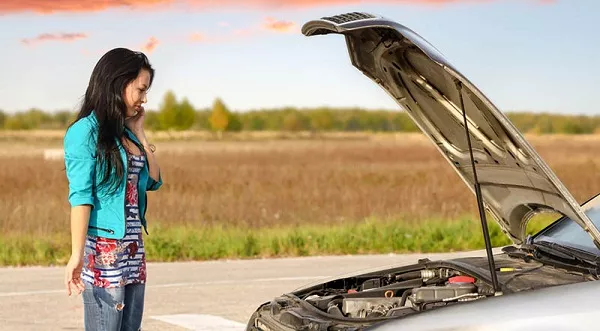
"But I just bought this car brand-new last week!"
Taking public transportation is no longer an option for you, as doing so will most certainly make you very late for work. So you pop the trunk and take a look at the engine bay - and you don't have a clue where to start. Is it the battery? Is it the car starter problem? Did I forget to load up on fuel the previous day?
This scenario is a prospect that car owners consider annoying at best and terrifying at worst, from inexperienced new car owners to the veteran car enthusiasts. It’s an event that's always at the back of our minds, yet is bound to happen one day in the course of one's ownership of the car.
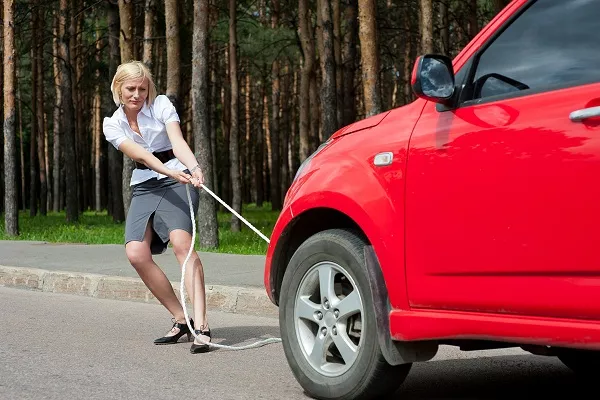
It's always worse if it happens at the wrong place and time
So how do I fix it? Well, Philkotse.com will teach you how to diagnose your car starting problems as well as some quick and easy fixes.
The car won’t start: But why?!
An internal combustion engine, regardless of configuration, will require adequate electricity, fuel, and air; otherwise, your car will definitely not start. Here’s why:
- Fuel – An internal combustion engine burns fuel to produce the energy needed to run the car, whether it's gasoline or diesel. The energy released during combustion is responsible for pushing down your engine’s pistons, rotating the crankshaft through the connecting rods, which turns the flywheel and the transmission, that sends power to the drive wheels.
- Air – Anything that uses combustion needs air to completely burn the fuel, including engines. In engines with four-stroke cycles (common in today’s modern cars), the initial stroke is called the intake stroke where the piston moves down the cylinder creating a suction effect that pulls air into the chamber. At this stage, fuel is also introduced to the mix. Next, the valves will close, the crankshaft moves the piston up to compress the fuel-air mixture; this is called the compression stroke.
- Electricity – In order to actually combust, the piston once goes up again into what we call the combustion stroke. When the piston reaches the top, a device called a spark plug lights up and ignites the air-fuel mixture.
- Starter – While not actually needed for starting combustion because some engines can be started by pushing them, a starter is quite useful as it can initiate the engine’s operation using its own power. It works by cranking the flywheel using electricity from your car’s battery, a lot of it as the starter is actually a small electric motor unto itself. And while starter solenoids are a crucial part of the starter motor, they can be subject to wear and tear.

Gearheads know the way of the four-stroke by heart
>>> Also check out: 10 common reasons why your car won't start & How to troubleshoot them
Now, if we take away even just one of these elements from the combustion process, what happens? Yes, the engine won’t start. But missing one of these elements won’t be immediately apparent, and you'll need to watch out for several symptoms. If you know what's doing, these symptoms can lead you exactly to what’s missing or broken.
#1. The starter clicks but the car won't start
When you hear a clicking noise but your car won’t start, the culprit could be a weak battery, a dirty battery terminal, a worn starter motor, or a stuck solenoid.
When this happens, try to turn on one of your interior lights. If the lights start turning off as you attempt to start the car, it’s a sign that the battery is weak or dying. One trick is to perform the “key cycling” trick.
How? Turn the key to the Start position repeatedly 10 times. Once done, wait for five minutes and then try to start the engine. If the cabin light doesn’t flicker or switch off when you turn the key, move on to the next step.
Another trick is tapping on the battery terminals. If you have the tools, try to clean the battery terminals instead, then tighten them afterward. If you have high grit sandpaper on hand, try sanding the terminals to get rid of the accumulated dirt and corrosion.
If that isn’t possible and you’re stranded somewhere without tools, then try smacking each battery terminal with the heel of your shoe; this has the effect of repositioning the terminal by rotating it. After that, try restarting the engine.

Here's what a very corroded battery terminal looks like
It that doesn’t work, try smacking the starter using a wrench or tire iron, as one or more of your starter’s electrical contacts might have gotten stuck.
#2. Car won’t start: No click when you turn the key
If there is no clicking sound coming from the starter motor, it could be due to a number of reasons. There might be a loose battery connection or the terminals aren't connected at all. A bad starter solenoid, bad starter, a busted ignition switch, or a bad starter bad connection can all be the reason.
For these situations, check if your battery terminals are even connected at all. Another is to try jump-starting the car using jumper cables connected to another car that's in good working order. For bad starter issues though, you might try knocking the starter, but you might need a mechanic for this.
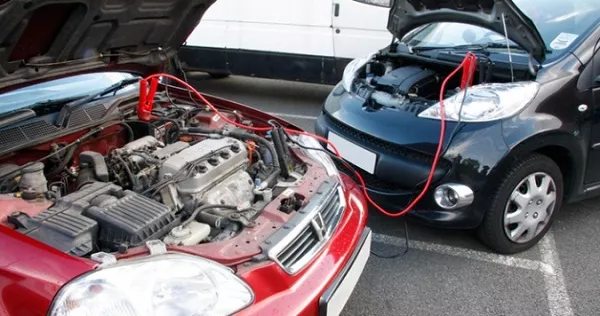
It's great to have friends who also own cars, especially if yours breaks down. Yay!
#3. Engine cranks but the car won’t start
There are several possible causes for an engine that cranks but doesn't start. It might be that your spark plugs are dirty or outright busted, fuel delivers issues, or your engine has lost its compression. In this case, do avoid repeatedly starting to try to start your engine hoping that it’ll fire up, you’ll eventually drain your battery and/or you will incur damage to your starter motor.
Here’s a list of things you can do in this specific case:
- Do check your tank. It might just be empty.
- If you have an OBD scanner handy, then try scanning for any trouble codes. It might be a possibility that your crankshaft position sensor or camshaft sensor is off and those will prevent your engine from starting. Also, a throttle position sensor will prevent electricity from sparking in the cylinders.
>>> Related: 8 common signs of a bad throttle position sensors; and how to fix it
- Battery. If you can hear that your engine is cranking slowly than usual, you might start your car with low battery. Also, do check your engine’s battery terminals and starting system wires.
- If it makes an unusual noise when cranking, it might be your starter. Try tapping it.
- Check for blown fuses.
- Check your spark plugs. If they’re really black and dirty looking, try to clean them up with a wire brush. Use sandpaper as a last resort.
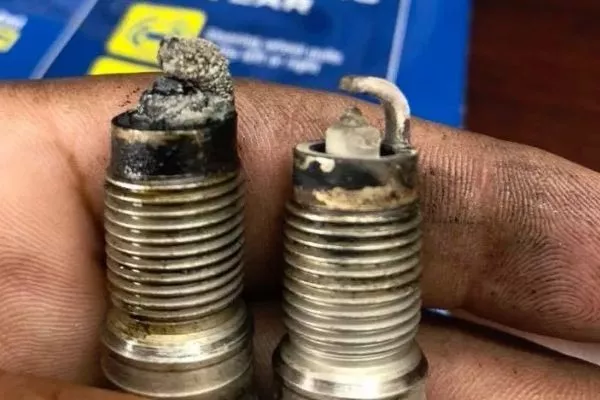
For crying out loud! Don't allow your spark plugs to deteriorate to this condition!
- Try to get someone to try and start your car in the dark. Open up the hood and see what happens. If you see sparks, then you might have bad wires that need replacing. If you have electrical tape, that’ll do nicely as a temporary fix.
- If you smell gas, then your engine might be flooded. Open up your hood and wait for a while. Maybe for 20 minutes then try starting again. If that doesn’t work, try checking the spark plugs to see if it has any problems. If those are wet, then you’d need to check your carburetor. If you’re stranded somewhere, you can also try to keep the gas pedal on the floor and then attempt to start the engine. Do not pump the gas pedal.
- If your engine misfires and runs very rough or doesn't want to start at all despite having good spark, no fuel problems, and air problems, then there's a chance it might be with your compression. This is a difficult fix as you'll actually need to find the faulty vacuum line. Call a tow-truck.
>>> Worth to note: A short guide to towing services in Metro Manila
#4. Car won’t start when it's cold
There are four reasons as to why your car won’t start in cold mornings. First is car batteries typically make less electric current when it's cold. The chemical reaction needed to this is slower after all. Second is that when its cold, oil tends to become thicker. As such, it doesn’t flow inside the engine as well. The third is when carburetors become clogged. Here are the steps you need to start when this happens.
- Turn everything off
- Dip the clutch when turning the ignition
- Check your battery terminals and make sure they’re clean or tightened
- Add engine oil
- Outright replace the battery for a new one
- If all those don’t work, do a jump start. Read more: Top 9 common mistakes to avoid when jump-starting your car
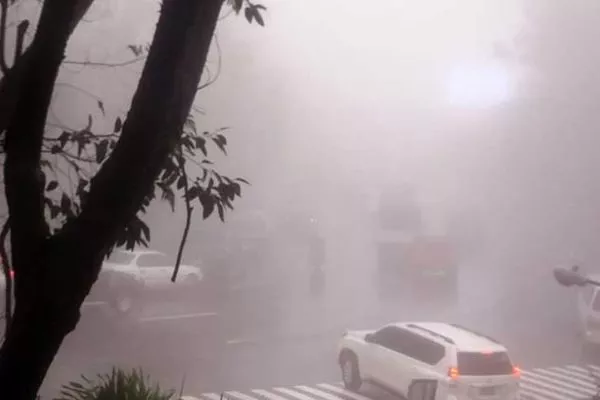
While we do not have snow, Baguio is cold enough to cause cold start issues
5. Car starts then dies immediately
This especially infuriating condition is caused by several problems. Here’s a list of possible causes;
- Fuel Pump Leak – With a fuel pump with issues, the engine might not be getting the right amount of fuel.
- Fuel Injection Sensor issue – A fuel injector sensor needs a certain amount of pressure to know when to inject the right amount of fuel into the combustion chamber. If the fuel sensor is fouled up, it might be providing the wrong amount of fuel.
- If you’re running a classic car, it will have a carburetor. So if you have a bad carburetor, the air to fuel ratio might not be right so your engine will not continue running.
- ECU problems – One potential problem is that your ECU might have incurred some damage. And as you well know, ECUs control almost every electronic component of a car, including fuel injection sensors.
What to do if your Car won't Start
#6. Hard start when it's warm
In this particular situation, the hot weather may be evaporating gasoline faster than usual. When fuel does that, too much vapor will be created and that will affect the engine. Another likely reason is heat expansion which heightens compression and/or the heat is starting to affect relays.
While we’ve listed as much as we can to help you diagnose and consequently deal with car starting problems, there are many other issues that we might’ve missed or glossed over. One such thing is how to actually perform a jump start, a push start, and many others. As such, we guarantee you that we’ll be covering each of those in their individual articles.
>>> Visit our website regularly for more useful tips on car maintenance.
Recent posts
- [Philkotse guide] 4 best portable jump starters for your beloved car Aug 16, 2022
- [Philkotse guide] All about a failing car starter and how to fix it Nov 30, 2022
- What you need to know about a dying car battery Nov 30, 2022
- [Philkotse guide] How often should I replace my car batter? Oct 19, 2020
- Top 8 symptoms of a failing car starter Aug 16, 2022












